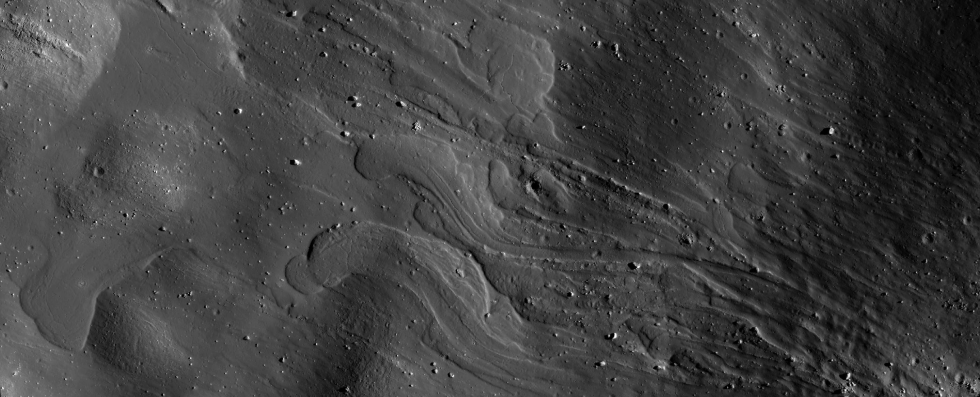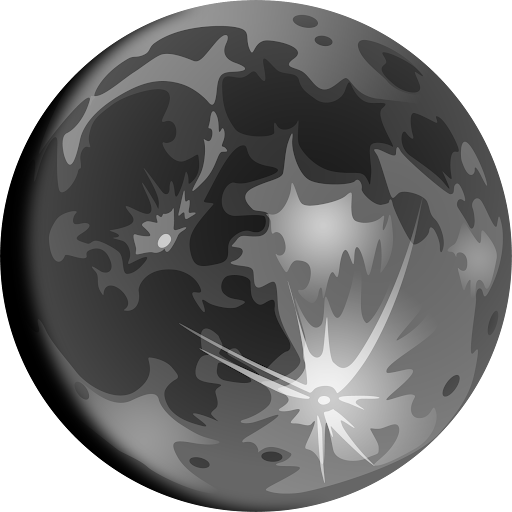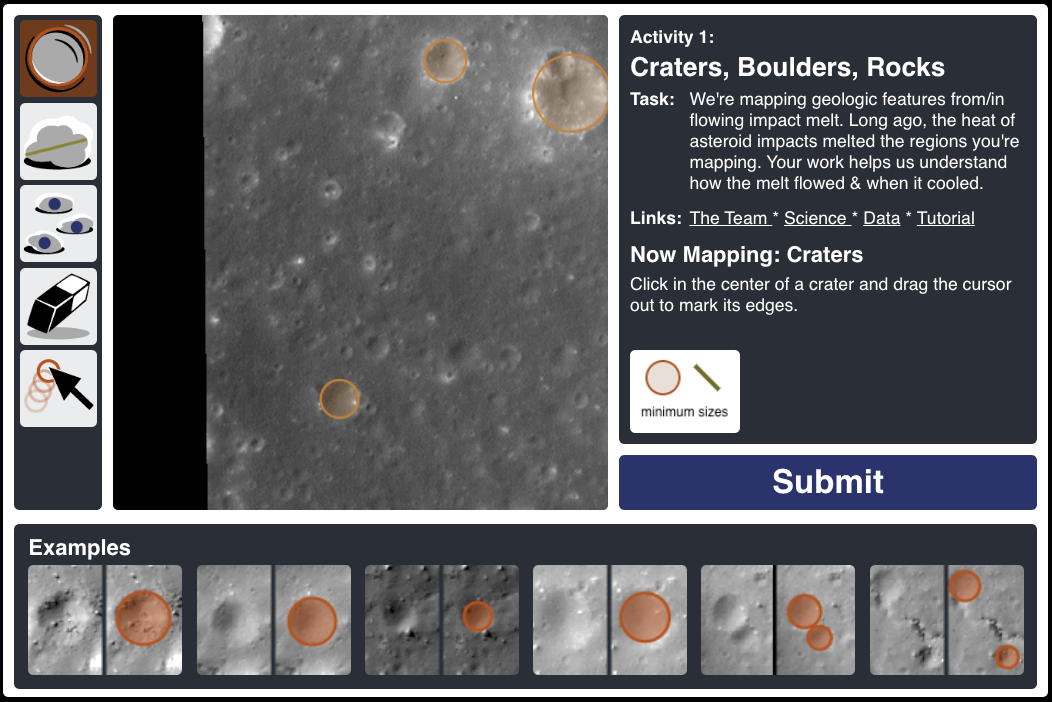Lunar Melt
When big asteroids hit the Moon, they can melt the rock they hit and leave a crater. This melted rock flows away from the new crater, picking up and moving chunks of rock, much like a river or beach waves can move sand, pebbles, and even big rocks. The size and placement of these now-frozen flows and the rocks they carried can tell scientists about how much rock was melted, its temperature, and how easily it flowed.
The Lunar Melt project invites you to look at images of the Moon’s surface from NASA’s Lunar Reconnaissance Orbiter and mark the sizes and locations of impact craters and boulders around them. Your marks will help reveal the rock fragments in melted rock flows, the directions and timing of the flows, and potentially help us harness these flows to better understand the Moon’s interior.
project task
Examine images
division
Planetary Science
where
Online
launched
2025
What you'll do
- Complete the in-project tutorial.
- Click on an icon to choose a marking tool.
- Click on images to map and measure craters and boulders on the Moon!
Requirements
- Time: 10 minutes for tutorial
- Equipment: an internet-connected computer, tablet, or smartphone
- Knowledge: None; in project tutorial provides all the necessary information.
Get started!
- Visit the project website.
- Fill out a short form to register with World Mappers.
- Complete the tutorial
- Start mapping craters and boulders on Mars!
Learn More
The project website has pages of information on the data (images) the project is working on and the science being done by the project.
Get to know the people of Lunar Melt!
































